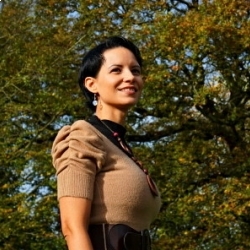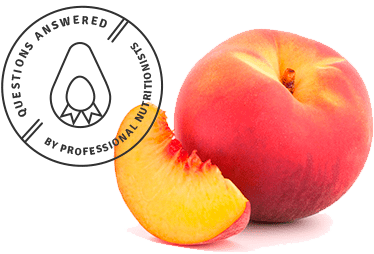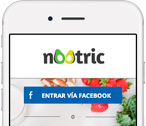Francesca
Healthy Eating
I do eat healthy but not sure of my portion sizes

Elizabeth Cooper
0
votes
Hi Francesca
Thanks for your question.
It's great that you eat healthily and I would always concentrate more on what you are eating rather than being too worried about portion sizes. For instance, I would ensure that you are eating lots of non-starchy vegetables, some healthy fat with every meal such as avocado, olive oil, nuts, seeds, oily fish (e.g. salmon, mackerel, sardines, herring) and some lean protein such as chicken, eggs, fish or plant proteins such as beans, lentils, nuts in order to keep blood sugar balanced and energy levels stable. However, if you would like to have a better idea of your portion sizes there is a guide below plus to give you a rough idea of what your plate should look like I would recommend half of it contains vegetables or salad, a quarter of it lean protein and the other quarter complex carbohydrates such as quinoa or brown rice and some healthy fat. Here's the guide I mentioned. Hope it helps.
Fruit: 1 medium piece e.g. apple or ½ cup (125ml/4 fl oz) fresh fruit or ¼ cup (63ml/2 fl oz/small handful) of dried fruit
Grains: 1 slice wholemeal bread or 2 oat cakes
Starchy vegetables: ½ sweet potato or 2 small new potatoes or 1 cup (250ml/8 fl oz) butternut squash/pumpkin
Non-starchy vegetables: 1 cup of raw vegetables or a large bowl of green salad leaves or ½ cup (125ml) of cooked vegetables
Meat/fish/chicken: 115g/4oz (size of a pack of cards)
Wholegrains: 1/3 cup (85ml/3 fl oz) cooked (small fist size)
Beans/lentils: 1/3 cup (85ml/3 fl oz) cooked
Nuts/seeds: small handful
Thanks for your question.
It's great that you eat healthily and I would always concentrate more on what you are eating rather than being too worried about portion sizes. For instance, I would ensure that you are eating lots of non-starchy vegetables, some healthy fat with every meal such as avocado, olive oil, nuts, seeds, oily fish (e.g. salmon, mackerel, sardines, herring) and some lean protein such as chicken, eggs, fish or plant proteins such as beans, lentils, nuts in order to keep blood sugar balanced and energy levels stable. However, if you would like to have a better idea of your portion sizes there is a guide below plus to give you a rough idea of what your plate should look like I would recommend half of it contains vegetables or salad, a quarter of it lean protein and the other quarter complex carbohydrates such as quinoa or brown rice and some healthy fat. Here's the guide I mentioned. Hope it helps.
Fruit: 1 medium piece e.g. apple or ½ cup (125ml/4 fl oz) fresh fruit or ¼ cup (63ml/2 fl oz/small handful) of dried fruit
Grains: 1 slice wholemeal bread or 2 oat cakes
Starchy vegetables: ½ sweet potato or 2 small new potatoes or 1 cup (250ml/8 fl oz) butternut squash/pumpkin
Non-starchy vegetables: 1 cup of raw vegetables or a large bowl of green salad leaves or ½ cup (125ml) of cooked vegetables
Meat/fish/chicken: 115g/4oz (size of a pack of cards)
Wholegrains: 1/3 cup (85ml/3 fl oz) cooked (small fist size)
Beans/lentils: 1/3 cup (85ml/3 fl oz) cooked
Nuts/seeds: small handful

Andrea Prochazkova
0
votes
Hi Francesca
Elizabeth has provided you with an excellent guidance on portion sizes. I would like to add that you do not need to be worried about exceeding vegetable portions in general – the more the better!
However, if you are watching your weight or trying to maintain it, it would be wise if you watch out your portion sizes especially for carbs (pasta, bread, rice and other grains) and stick to the recommended small fist size serving of these. Also, when you cook, try to use spoons to measure the exact amount of oil you are using so you can control your portions well.
The most important part is probably watching portion sizes of your snacks - stick to the guidance on the packaging using a scale or avoid buying large packs and stick to small ones.
Interestingly, our plates have gone bigger over the 100 years hence we can eat unwillingly more that we need. If you are worried about overeating or overindulging, use smaller plates and make sure you fill them up with the healthy carbs, protein and fats. After you finish eating, wait about 20 minutes and if you feel hungry, go and have some more. It takes about 20-30 minutes for your body to signal that it is full and no more food is needed.
Furthermore, some studies found that bright coloured plates increase appetite and we tend to eat more than we need to so you might find it helpful to use plain coloured plates.
Hope this helps!
Elizabeth has provided you with an excellent guidance on portion sizes. I would like to add that you do not need to be worried about exceeding vegetable portions in general – the more the better!
However, if you are watching your weight or trying to maintain it, it would be wise if you watch out your portion sizes especially for carbs (pasta, bread, rice and other grains) and stick to the recommended small fist size serving of these. Also, when you cook, try to use spoons to measure the exact amount of oil you are using so you can control your portions well.
The most important part is probably watching portion sizes of your snacks - stick to the guidance on the packaging using a scale or avoid buying large packs and stick to small ones.
Interestingly, our plates have gone bigger over the 100 years hence we can eat unwillingly more that we need. If you are worried about overeating or overindulging, use smaller plates and make sure you fill them up with the healthy carbs, protein and fats. After you finish eating, wait about 20 minutes and if you feel hungry, go and have some more. It takes about 20-30 minutes for your body to signal that it is full and no more food is needed.
Furthermore, some studies found that bright coloured plates increase appetite and we tend to eat more than we need to so you might find it helpful to use plain coloured plates.
Hope this helps!




